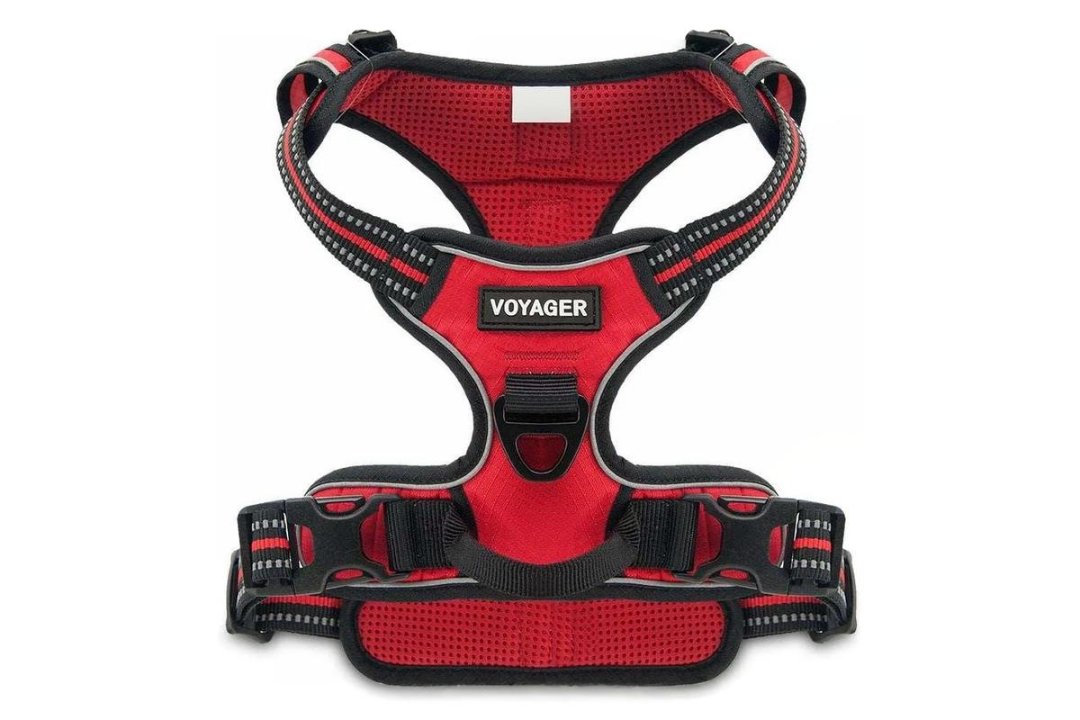If you’ve ever walked a dog that outweighs your sense of balance, you know the feeling: one second you’re strolling, the next you’re skidding across the sidewalk. Strong dogs are wonderful companions, but they can make walks exhausting, sometimes even risky. Trainers run into this problem all the time, and most of them suggest the same solution: a no pull dog harness.
At first glance, it doesn’t look all that different from a regular harness. But ask anyone who has tried one, and they’ll tell you the experience on the leash changes completely.
Gentle Control Without Hurting the Neck
Collars seem simple, but for strong dogs, they’re actually a problem. When a dog lunges forward with a collar, the pressure hits the throat directly. Trainers point out that over time, this can cause coughing, trachea injuries, or just make walks stressful.
A no pull dog harness changes that equation. Instead of force on the neck, the pressure spreads across the chest and shoulders. Stronger areas of the body take the weight, and dogs stay safer. It’s a small design change, but it has a huge impact on long-term health.
Reducing Pulling Through Smart Design
Here’s something trainers explain often: a standard back-clip harness can actually encourage pulling. It works a little like a sled dog harness; the harder they pull, the more effective it feels. So a strong dog learns quickly that lunging forward works.
With a no pull dog harness, the leash often attaches at the front. When the dog pulls, the design redirects their body to the side. Instead of rewarding the pull, it slows them down. Trainers like this because it doesn’t use pain; it simply makes pulling less useful. Over time, most dogs realize that walking calmly gets them where they want to go faster.
Comfort Matters More Than People Think
Strong dogs usually have lots of energy. That means longer walks, sometimes rougher terrain, and more distractions. Trainers know if the harness rubs or pinches, dogs resist wearing it. That’s why they emphasize padded straps, breathable fabric, and adjustable fits.
A comfortable no pull dog harness helps the dog relax, which makes training easier. Instead of fidgeting, they focus on the walk. That comfort also helps owners stay consistent with training, because gear fights become less of an issue.
Trainers Value Tools That Support Learning
One thing trainers are always quick to mention: no tool alone fixes pulling. A no pull dog harness won’t magically transform a strong dog overnight. But what it does is create space for training to work.
When a dog isn’t choking themselves every time they lunge, they’re more responsive to cues. Owners can reward good behavior, redirect excitement, and build calm habits. The harness isn’t the whole answer; it’s a support system that makes the process smoother.
Owners Need Safety Too
This part often gets overlooked. Trainers don’t just think about the dog; they think about the human on the other end of the leash. A big dog pulling hard can injure shoulders, twist wrists, or even knock someone over.
A no pull dog harness reduces that risk. It gives the handler more control without needing brute strength. Some designs even include sturdy handles for quick control in emergencies. Trainers appreciate this because when owners feel safer, they walk more confidently, and that confidence makes a difference in the dog’s behavior too.
Building Better Habits Step by Step
Training is about repetition. Every walk is either teaching a good habit or reinforcing a bad one. A no pull dog harness tilts the odds in favor of the good habits. It makes pulling less rewarding and calm walking more natural.
Over weeks, sometimes months, trainers see the shift. Dogs begin to settle, owners feel less tension, and the relationship on the leash changes. It’s not magic; it’s steady progress, and the right gear makes it possible.
What to Look for in a Trainer-Approved Harness
Not every harness earns a trainer’s stamp of approval. The ones they recommend usually include:
Front clip attachment for redirection.
Padded straps to avoid chafing.
Adjustable fit to keep it snug but comfortable.
Breathable materials for long outings.
Strong hardware that won’t snap under pressure.
When combined, these make a no pull dog harness effective for both safety and training.
Why Trainers Trust This Approach
At the heart of it, trainers care about three things: keeping dogs safe, keeping owners safe, and teaching better behavior. A no pull dog harness hits all three. It doesn’t rely on punishment, it helps control strength humanely, and it allows training to take root.
For strong dogs, that’s the balance that makes walks something to look forward to rather than dread.
Final Thought
Walking a strong dog doesn’t have to mean sore arms or pulled shoulders. Trainers recommend the no pull dog harness because it protects the dog, protects the owner, and encourages calmer, more enjoyable walks.
And that’s the point, isn’t it? Walks shouldn’t feel like battles. They should feel like shared adventures safe, steady, and stress-free.



